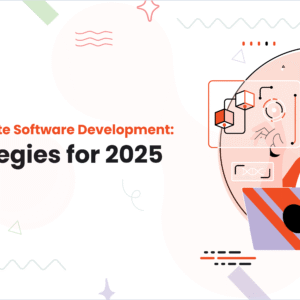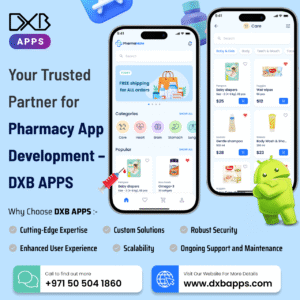The gaming industry is undergoing a paradigm shift. With the rise of blockchain technology and decentralized ecosystems, the concept of “Play-to-Earn” (P2E) has emerged as a game-changing innovation. Unlike traditional video games where players spend money for entertainment, Play-to-Earn games enable players to earn real-world value through in-game activities. This development has not only transformed gaming but has also created new economic opportunities for players and developers alike.
In this blog post, we will explore the foundations of Play-to-Earn game development, how these games work, what makes them successful, and what developers need to know to create a thriving P2E ecosystem.
What is a Play-to-Earn Game?
Play-to-Earn (P2E) games are video games that integrate blockchain technology to reward players with digital assets—such as cryptocurrencies or NFTs (non-fungible tokens)—that have real-world value. Players can earn these assets by completing tasks, winning battles, collecting items, or trading in-game resources.
Unlike the traditional “pay-to-play” or “freemium” models, where game companies generate revenue by selling game copies or in-game purchases, P2E games often distribute value to players, enabling a decentralized economy where users have true ownership over their assets.
Key Features of P2E Games:
-
Ownership: Players own their assets via NFTs stored on the blockchain.
-
Tradability: Items and characters can be bought, sold, or traded on open marketplaces.
-
Earning Potential: Players can monetize their gameplay through tokens or item trading.
-
Transparency: Game rules and asset scarcity are enforced by smart contracts.
-
Interoperability: Some games allow cross-game or cross-platform usage of assets.
Why Play-to-Earn is Growing
Several factors have contributed to the rise of Play-to-Earn gaming:
1. Blockchain Technology
The integration of blockchain allows for verifiable scarcity, ownership, and provenance of in-game items. Smart contracts automate complex in-game economies and ensure fair play.
2. Rise of Cryptocurrencies
The popularity of tokens like Ethereum, Solana, and BNB has led to the creation of native game currencies that can be exchanged for fiat money, encouraging participation.
3. DeFi and NFTs
DeFi (Decentralized Finance) principles like staking and yield farming are being gamified. NFTs, in particular, have become the backbone of asset ownership in games, creating value through uniqueness and rarity.
4. Global Accessibility
Many P2E games are particularly attractive in emerging markets, where players can earn meaningful income by investing time in gameplay.
Popular Examples of P2E Games
Some of the most notable P2E games include:
-
Axie Infinity: One of the pioneers of P2E, where players breed and battle Axies—NFT creatures that can be traded for real money.
-
The Sandbox: A metaverse platform that allows players to build, own, and monetize virtual experiences.
-
Gods Unchained: A blockchain-based card game where cards are NFTs that can be sold or traded.
-
Illuvium: An open-world RPG and auto-battler game built on Ethereum.
Steps to Develop a Play-to-Earn Game
Building a Play-to-Earn game is more complex than traditional game development, as it combines gameplay mechanics with blockchain infrastructure and economic systems. Here’s a step-by-step breakdown:
1. Game Concept and Design
Start with a compelling game idea that naturally supports an earning mechanism. The gameplay must be fun and engaging even without the monetary incentive.
Define:
-
Game genre (RPG, strategy, simulation, etc.)
-
Core mechanics (combat, trading, crafting, etc.)
-
Earning activities (quests, battles, item sales)
-
Player motivation and retention loops
2. Choose the Blockchain Platform
The blockchain layer is crucial. Consider factors such as speed, gas fees, developer support, and user base.
Popular platforms:
-
Ethereum: High adoption but can be expensive (gas fees).
-
Binance Smart Chain: Lower fees, good for quick deployment.
-
Polygon: Ethereum-compatible, faster and cheaper.
-
Solana: High-speed transactions and growing game ecosystem.
3. Tokenomics Design
Tokenomics refers to the design of the game’s economy. You’ll likely need two tokens:
-
Utility Token: Used for in-game transactions (e.g., purchasing items).
-
Governance Token: Gives voting power or long-term investment value.
Define:
-
Distribution model (how players earn tokens)
-
Token supply and inflation control
-
Liquidity pools and exchangeability
-
Incentives for holding vs. spending
4. Smart Contract Development
Smart contracts govern game logic, token minting, and ownership.
Key elements:
-
NFT minting for in-game items or characters
-
Secure token transfers
-
Marketplace functionality
-
Upgradability and auditability
Use robust frameworks like:
-
Solidity (Ethereum)
-
Rust (Solana)
-
Hardhat, Truffle (for testing/deployment)
5. Game Development and Integration
The game itself can be built using traditional engines like:
-
Unity: Widely used, easy to integrate with Web3 SDKs
-
Unreal Engine: High-fidelity visuals, great for immersive experiences
Web3 SDKs for integration:
-
Moralis
-
Alchemy
-
Web3.js or Ethers.js
You’ll need to ensure that wallet connectivity, NFT visibility, and token balances are seamlessly integrated into the user experience.
6. Build the Marketplace
A decentralized marketplace allows players to trade NFTs or in-game assets.
Features:
-
Listing and bidding
-
Filtering by rarity, type, value
-
Integration with wallets like MetaMask or Phantom
7. Security and Compliance
Security is paramount. Smart contract bugs can be disastrous.
Ensure:
-
Code audits by third-party firms
-
User data encryption
-
Anti-cheat systems
-
Legal compliance with regional gaming and crypto laws
Challenges in Play-to-Earn Game Development
While promising, P2E game development is not without hurdles:
1. Sustainability
A common issue is inflation and unsustainable token economies. If rewards outpace player spending, the economy collapses.
2. Regulatory Risks
Regulatory scrutiny around cryptocurrencies and NFTs is increasing. Developers need to ensure KYC/AML compliance and avoid securities violations.
3. Player Retention
Many users are profit-motivated rather than game-motivated. Keeping players engaged after the initial earning hype is a major challenge.
4. Scalability
Blockchain congestion can lead to high fees and slow transactions, affecting gameplay.
5. User Experience
Wallet integration, token swaps, and blockchain jargon can be daunting for non-crypto users.
The Future of Play-to-Earn
Play-to-Earn is evolving into Play-and-Earn and even Play-to-Own, with a greater emphasis on fun, long-term player engagement, and community-building rather than purely financial motives.
GameFi (the fusion of gaming and DeFi) is likely to evolve with:
-
DAOs (Decentralized Autonomous Organizations) managing game economies
-
Interoperable NFTs across games
-
Fully on-chain games (like Dark Forest)
-
AR/VR integration for metaverse experiences
As the space matures, quality and innovation will outshine hype, and developers who balance entertainment with economic mechanics will lead the next wave of gaming.
Conclusion
Play-to-Earn game development represents a thrilling frontier for both gamers and developers. It fuses entertainment, finance, and technology into a single interactive experience. However, creating a successful P2E game is not just about integrating blockchain—it’s about crafting compelling gameplay, designing sustainable economies, and ensuring a user-friendly experience.
As we move into a more decentralized digital future, those who understand both game design and crypto economics will be best positioned to shape the next generation of interactive entertainment.







